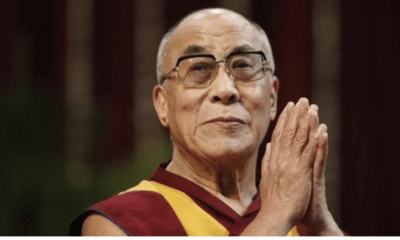|
Getting your Trinity Audio player ready...
|
Decoding a Blast
The timing and location of the latest attack in Kabul may be significant. The dots can be joined to the Haqqani Network
Exactly a decade after 9/11, on September 11, 2011, a truck pulled up next to the US military base in Wardak province in eastern Afghanistan. Within minutes, there was a huge detonation and the truck turned into a fireball. The explosives stored in the tanker truck had ripped apart the entire wall of the US base and caused grievous injuries to dozens of US soldiers. Later in the month, Admiral Michael “Mike” Mullen, the then-Chairman of the Joint Chiefs of Staff, made his four decade-long career’s last deposition before a Congressional panel in Washington DC, in which he bluntly said, “The Haqqani network acts as a veritable arm of Pakistan’s Inter-Services Intelligence agency”.
When a similar truck bomb ripped through the main diplomatic square in Kabul on Wednesday, killing around 90 people and injuring several hundreds, suspicion naturally turned to the Haqqani network.
In fact, the Afghan intelligence agency, the National Directorate of Security (NDS), has directly accused the Haqqani network for the dastardly act that came just days into the Muslim religious month of Ramadan.
The timing and location of the attack are significant. The blast took place merely a few yards from the German embassy in Kabul, injuring several staff members of the embassy and killing the lone Afghan security guard at the gate. It happened at a time when Prime Minister Narendra Modi was issuing a stern statement jointly with his German counterpart Angela Merkel, vowing to take “strong measures” against those who encourage, support and finance terrorism. Describing terrorism as the single biggest problem facing future generations, Modi promised that “both our countries will work together to tackle this problem together and cyber security and intelligence sharing is a very important aspect of this cooperation”.
In recent years, Europe has seen several terrorist incidents, from Paris to Manchester. European countries have been participating in the NATO forces in Afghanistan. Germany itself has around 1,000 soldiers handling various security responsibilities in Afghanistan. In such a scenario, it is not possible to completely dismiss the timing of the latest Kabul attack as a mere coincidence.
The Kabul attack is one of the worst attacks in the last many years. It is not the first though, nor might it be, however much we all may wish, the last. Pakistan has issued its ritualistic condemnation. President Mamnoon Hussain, in his speech to the Pakistan Parliament, condemned Wednesday’s extremist attack, saying that the people and the government of Pakistan will continue to support all efforts aimed at ensuring peace in Afghanistan. However, one need not be in any doubt about the Pakistani sponsorship of the dreaded Haqqani network. The saga of the Haqqani network is mired in such secrecy that no one really knows who its leader is.
Founded by the Pashtun warlord, Jalaluddin Haqqani, the group came into prominence during the Soviet occupation of Afghanistan. It is believed that the CIA had a hand in the rise, if not creation, of this terrorist group. After the withdrawal of the Soviet Army from Afghanistan, Haqqani became a henchman of the Taliban on the one hand, and the Pakistani ISI on the other. He came to the lawless lands of North Waziristan and set up his headquarters at Miranshah, spreading his sprawling criminal empire across the Pakistan-Afghanistan border.
Sometime in 2015, the BBC reported, based on inputs from sources, that Jalaluddin Haqqani had died at least a year ago. Sirajuddin Haqqani, a hardcore Taliban commander, is said to be the present head of the network. But nobody has any doubt that the real force behind the network is none other than the ISI.
When Mike Mullen gave his categorical statement accusing Pakistan of sponsoring the Haqqani Network, he had his own inputs. One of them came from the top US commander in Afghanistan, General John Allen. The movement of suspicious trucks across the Pak-Afghan border was noticed by the US army and brought to the attention of Pakistan’s then-Army Chief, General Ashfaq Parvez Kayani. Allen was rudely shaken when Kayani told him that he would “make a phone call” to prevent any disaster. Allen, for sure, realised that the Haqqani network was just a “phone call away” from the Pakistan army.
In fact, it was reported that American spy agencies have intercepts of a telephone call made sometime in 2008, in which General Kayani was heard referring to the Haqqani network as a “strategic asset”. The unending bloodbath in Afghanistan is singularly the handiwork of the ISI through its proxies like the Haqqani network.
When will it end? To understand that, we have to know about another warlord from the same region. “He lived and died like a true Pashtun,” reads the sign on a mud grave at Shakai in South Waziristan. The man resting in the mud grave is Nek Muhammad, a leader of the Afghan Taliban, who subsequently became unquestioned leader of the tribesmen in Pakistan’s Waziristan tribal belt. He would rise in prominence and brutality to a level which forced General Parvez Musharraf to buy truce with him.
However, this truce was short-lived. At some point, the ISI and the CIA had come to an agreement under which the ISI agreed to provide necessary intelligence to the Predator drones. Finally, in mid-June 2004, a Predator succeeded in firing a missile accurately into the compound where Nek Muhammad was staying, killing him instantly. Would Pakistan do the same to the Haqqani network or continue to use it as a “strategic asset”, is the question.
The writer is national general secretary, BJP, and director, India Foundation



